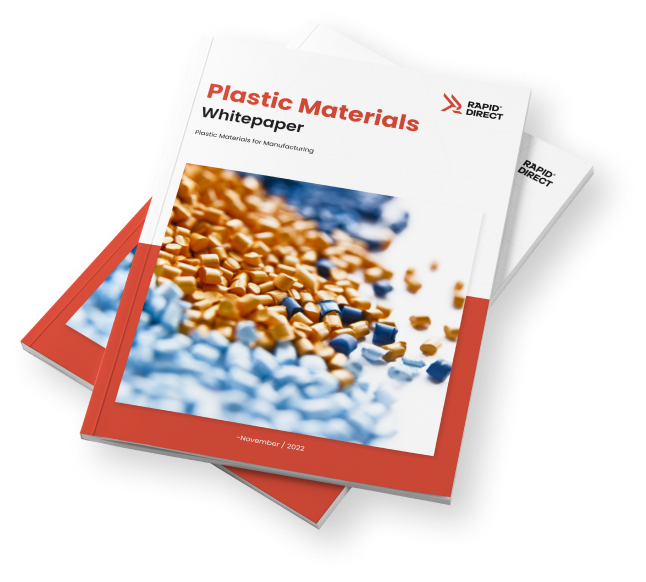Automotive plastics are engineering plastics known for their high performance, rendering them compatible with the rigorous demands of the automotive industry. Generally, they are versatile, making them suitable for achieving the needed innovation in the industry. Furthermore, they are lightweight, which reduces fuel consumption.
This article discusses the common plastics used in automotive part manufacturing, their properties, and why you should consider these high-performance plastics in making automotive parts and components.
Types of Plastics Used in the Automotive Industry, and Their Applications
Automotive plastics are currently making a huge difference in automotive part manufacturing. Below are the common ones used in the industry and their applications.
Polypropylene (PP)
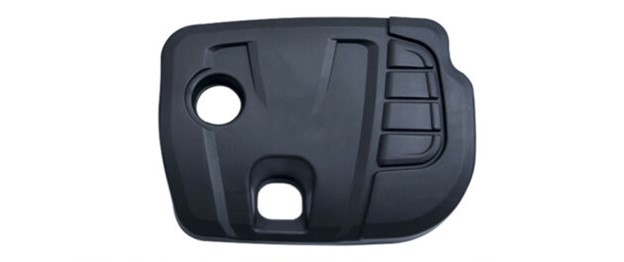
Polypropylene is a semi-crystalline, durable, and high-performance plastic polymer. It is highly resistant to chemicals and heat and highly moldable. Consequently, it is suitable for making products with complex designs. Furthermore, PP‘s chemical and heat tolerance make it great for automotive parts.
Polypropylene is a widely applicable plastic in cars due to its ability to adapt to many plastic fabrication techniques and its chemical and heat resistance. Therefore, it is critical to make the following automotive parts and components:
- Bumper fascia
- Gas cans
- Engine covers
- Cable insulation
- Instrument panels
Polyurethane (PUR)

Polyurethane is another high-performance plastic polymer made up of joined urethane. Its several forms make it a versatile automotive plastic suitable for complex and simple automotive components. Consequently, polyurethane is a common plastic polymer subjected to plastic fabrication processes for automotive parts such as injection molding and CNC machining.
Aside from its versatility, Polyurethane is highly suitable for the industry due to its insulative properties, strength, resilience, and moldability. Therefore, Polyurethane is applicable in making parts and components that shield the noise and heat from car engines and parts that require strength in the car body. Examples of automotive parts and components made with the polymer include:
- Seats
- Headrests
- Soundproof and air filtering systems
- Bumpers
- Suspension insulators
- Tires
Polyvinyl Chloride (PVC or Vinyl)

PVC is a common commercial plastic polymer with wide acceptance in the automotive industrial setting known for its excellent water and chemical resistance, cheap accessibility, impact resistance, durability, and brittleness.
PVC has poor heat stability, further requiring additives to improve its properties. Consequently, there is a reduction in the number of compatible products it is suitable for. Nevertheless, it is applicable in making the following components and parts.
- Vehicle airbags
- Door panels
- Cables
- Dashboard
- Upholstery underbody protection
Acrylonitrile Butadiene Styrene (ABS)

ABS is a high-performance automotive thermoplastic and amorphous polymer made up of three monomers; Acrylonitrile, Butadiene, and Styrene and fabricated using ABS injection molding. Its monomeric units determine its physical and mechanical properties. Nevertheless, the polymer is strong, durable, and exhibits good electrical insulating properties.
ABS is dyeable, which makes it more aesthetically pleasing. Therefore, it is applicable in the making of components such as:
- Dashboards
- Car body parts
- Wheel covers
Polyamide (PA/ Nylon 6/6, Nylon 6)
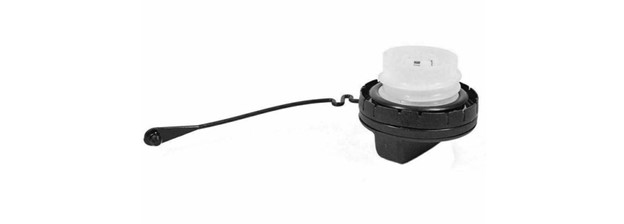
Nylon has wide application in the automotive part industry due to its sturdy nature. Nylon has wear resistance and great heat stability. However, it has flaws, such as its high-water absorption capacity. Nevertheless, you can use additives to improve its flaws. For example, fiberglass is added to automotive plastic to reduce its water absorption capacity
It is a high-performance engineering plastic suitable for heavy-duty applications required in automotive part manufacturing. Common parts and components made with the polymer include:
- Engine covers
- Door handles
- Gears
- Fuel caps and lids
Polystyrene (PS)
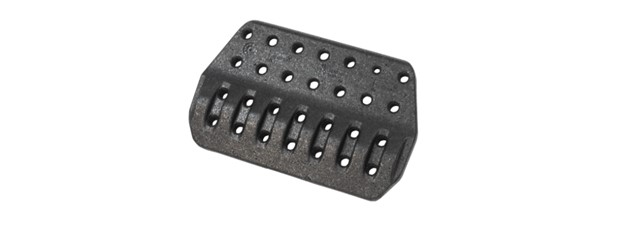
Polystyrene is a naturally transparent polymer that has solid and foamed forms. It is insoluble in water, has heat and chemical resistance, and has good optical properties. Most of the application of polystyrene in the automotive part industry is for displays and panels. Common examples include:
- Car interiors
- Knobs
- Car fittings
- Door panels
- Sound dampening foam
- Display bases
Polyethylene (PE)
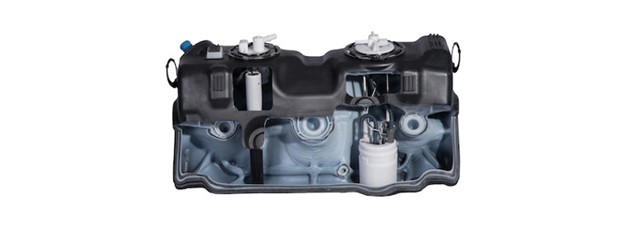
Polyethylene is a peculiar plastic due to its durability, cheapness, and chemical and microbial resistance. However, its highly critical in automotive part manufacturing due to its durability, low density, and chemical resistance. PE is suitable for making plastic fuel tanks and glass-reinforced car bodies.
Polyoxymethylene (POM)

POM is a semi-crystalline plastic known for maintaining its original dimension in several environmental conditions and temperatures. Aside from that, it is rigid, chemical resistant, UV resistant, and sleek in appearance. POM is useful for making automotive parts that require high precision and resistance to fuel, chemicals, and cold. As a result, it is applicable in interior and exterior trims and fuel system parts.
Polycarbonate (PC)
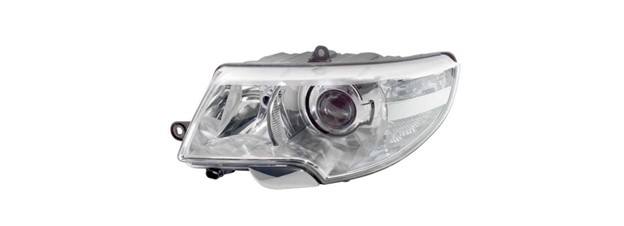
Polycarbonate is the plastic in the automotive industry known for its transparency and impact resistance. Additionally, the plastic polymer is rigid, hard, durable, strong, and stiff. Furthermore, it has outstanding optical clarity.
Polycarbonates can be thermoformed, molded, and worked with ease. They are applicable in making bumpers, bullet-proof glass, and headlamp lenses.
Acrylic (PMMA)
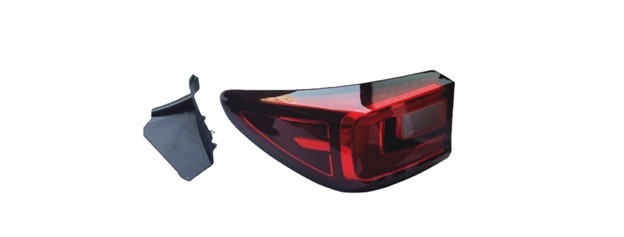
Acrylic is a more stable automotive plastic resistant to UV radiation and has outstanding optical clarity. As a result, it is a superb alternative to glass. Furthermore, Acrylic is cheap, readily available, and a good substitute for polycarbonate and other plastic polymers when material strength is not a deciding factor.
Acrylic is suitable for making the following parts and components such as:
- Automotive topcoats
- Car light covers
- Motorcycle windshields
Polybutylene terephthalate (PBT)
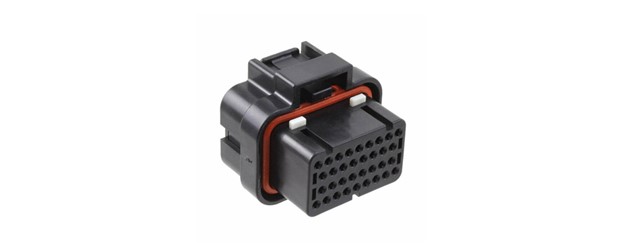
Polybutylene terephthalate is a stiff, tough, and transparent material. It is a critical material in automotive part manufacturing due to its insulative property and chemical resistance. Furthermore, it shrinks very little during forming. However, compared to plastic polymers such as polyethylene terephthalate, it has lower strength, lower rigidity, and better impact resistance.
PBT is applicable in making the following:
- Plug connectors
- Bumpers
- Door handles
Polyethylene terephthalate (PET)

Polyethylene terephthalate is a relatively safe automotive plastic with a glass-like appearance and a high strength-to-weight ratio. Furthermore, it is flexible, moisture resistant, and does not produce odors or fumes. Therefore, it is applicable in making exterior body parts and casing, engine covers, connector housing, and headlamp retainer.
Acrylonitrile Styrene Acrylate (ASA)
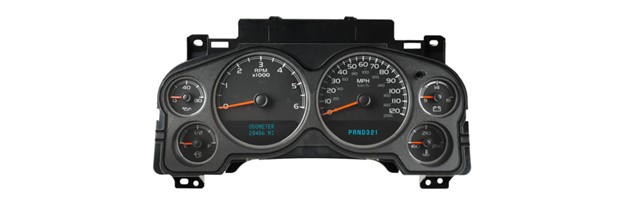
ASA is an amorphous thermoplastic similar to ABS but with improved water resistance and higher heat, chemical, and wear resistance. In addition, ASA is insoluble in water with good dimensional stability and weldability. That’s why it is applicable in making parts and components such as instrument panels, interiors, and electrical parts.
Why Use Plastics Used in Automotive Industries
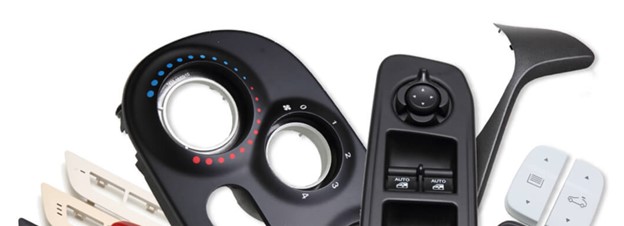
Plastic polymers are a huge part of the automotive industry because they have significant benefits. Some of the advantages include:
Safety and Comfort
Plastic polymers are safer than other materials used in automotive part manufacturing. Their safety is evident in their applications. For example, the car bumper is most common, made from plastics with high impact resistance, such as ABS, polycarbonate, and polypropylene.
Another scenario is its use in airbags, seat belts, and child restraints seats, which are durable and cushioning and most often made using polymers such as PVB, polyester fibers, etc.
Finally, they improve comfort, such as blocking UV rays, cushioning effect, and amplification of sounds that they deliver.
Weight Saving
The weight of parts used in automotive part manufacturing contributes to the energy exhausted by such parts. As a result, the right material should be lightweight while providing properties similar to metals used in making fuel and electric vehicles.
Plastic polymers such as polypropylene are common automotive plastics known for their hardness, durability, and other properties that make them replaceable with metals. In addition, their lightweight is ideal for fuel and electric vehicles as it leads to fuel and energy efficiency, cost-effectiveness, and better performance.
Minimal Corrosion Damage
Plastic polymers do not undergo corrosion when placed in moisture, chemicals, and other environments supporting the degradative process. Consequently, unlike metals, they have a longer lifespan.
Currently, plastics such as PEEK and polyethylene, known for their resistance to the harshest chemicals, are applicable in making numerous automotive parts used in harsh environmental conditions.
Energy consumption reduction
Due to their lightweight, there is a reduction in the energy required to power vehicles. Furthermore, there is a reduction in plastic fabrication energy consumption as fabrication is a quick and less labor-intensive method.
Besides, automotive plastics are recyclable, and recycling reduces or eliminates the need to create materials from scratch. This saves energy, unlike other metals and other materials that require more energy to manufacture and process into finished goods.
Allows further creativity and innovation
To remain relevant in the market, manufacturers resort to innovation and inventions. For example, the production of autonomous vehicles. However, doing this requires complex designs achievable with a compatible process and material.
On the one hand, plastic fabrication processes such as CNC machining and injection molding are popular due to their accuracy and support for mass production. On the other hand, plastics are better because they give room for creativity and innovation.
Plastic polymers’ support for innovation results from their excellent moldability while still providing durability comparable to that of metal. Aside from that, they are also machinable (soft) and don’t require extreme machining operations. As a result, they are suitable for making plastic prototypes and real parts.
Flexibility in Integrating Components
There is flexibility in integrating components made using plastics due to the nature of plastics themselves. For example, it is easy to integrate additives such as UV inhibitors, pigments, etc., into plastics. Integrating components into manufacturing materials helps to improve their properties, functionality, and aesthetics. Consequently, it makes improving mechanical properties such as stability and UV resistance easier.
Furthermore, the flexibility allows the automotive industry to use plastics for different applications. For example, glass fiber reinforced polycarbonate is suitable for making the car bumper, while the normal PC is applicable in making headlamp lenses, each an automotive part with different attributes.
Cost-Efficiency
Plastic polymers are an effective way of reducing costs in automotive part manufacturing as they are a blend of quality and affordability. Compared to other materials which they can replace, they are cheap. For example, polycarbonate used in headlamps costs about $1.5/kg, while its alternative glass costs about $2/kg. This is aside from other functional benefits such as impact resistance and durability.
Furthermore, plastic fabrication is generally less expensive. However, the cost depends on the manufacturing process. While most plastic fabrication processes have an initial investment cost subsequent use reduces the cost of production. This is visible in reducing injection molding costs and CNC machining costs.
Choose the Right Plastic, Make the Best Car Parts
Selecting the right material for any manufacturing process is a critical step that depends on cost, availability, and mechanical steps. Therefore, you should ensure that you outsource to the right plastic fabrication service. RapidDirect is the right rapid prototyping company that offers powerful manufacturing services for businesses that deal in car parts. We offer several plastic materials and manufacturing processes, including injection molding services, CNC machining services, 3D printing and more, with an eye on quality in a short period.
We provide quality services at competitive pricing and fast lead time for any automotive part design. Moreover, we are an ISO 9001:2015 company with the facilities, equipment, and team to help you achieve your project. So don’t hesitate. Start your project with our instant quoting platform now!
Conclusion
Automotive plastics are gradually replacing expensive metal materials in the industry due to their machinability and mechanical properties. This article provided the common high-performance plastics used in automotive plastics, their properties, and how the industry uses them. Are you struggling with selecting the right automotive plastic or looking for the best plastic fabrication service? Then, let RapidDirect help you make products that beam confidence and quality at a competitive price.
FAQs
This depends on the environment. In frigid weather, ABS is stronger than PVC, but in sunlight, PVC is stronger than ABS. As a result, ABS is a better plastic for interior automotive parts and components than PVC.
Several factors determine the selection of the right automotive manufacturing method. However, based on research, injection molding is the best method for the most plastic part because it supports mass production at a relatively low price, which is critical in the automotive part industry. Another method you could use is CNC machining, known for its accuracy, precision, and compatibility with complex product designs.
Every plastic has its mechanical properties making it suitable for different applications. However, choosing the right plastic depends on cost, availability, and manufacturing process.
